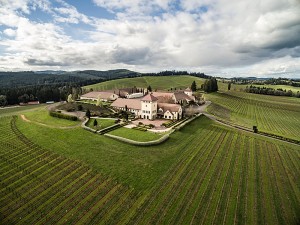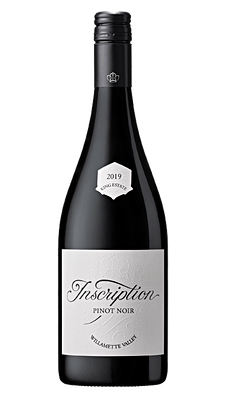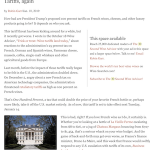At the risk of repeating a frequent complaint, it’s getting awfully hard for me to find a Pinot Noir I like at a price I can afford. Part of the problem here is that Pinot is deservedly popular. Another issue is that one person’s favored style Pinot may not bear much resemblance to another’s preference.
$1 Shipping Spring Wine Sale
Small-batch, artisan Cabernets, Merlots, Pinot Noirs, Chardonnays, and more are on sale now at The California Wine Club. Enjoy savings of up to 61% off winery retail, plus save up to $38 in shipping to most states on every case. Don’t wait! Wines will sell out quickly. Shop Now!
Browse the world’s ten best value wines on Wine-Searcher.com!
Burgundy clearly owns a dominant place in the world of Pinot Noir. Wine came to this hilly region in eastern France with the Romans some 2,000 years ago, and the grape we know as Pinot Noir was being cultivated by the 14th century if not before. This dominance continues, and until late in the 20th century was almost complete.
As recently as the 1980s, conventional wisdom held that while it was possible to grow Pinot Noir elsewhere, only the Burgundians had the combination of soil, climate, and wine making heritage to achieve greatness.
Nevertheless, as interest in wine grew around the world, more people tried to make great wine from Pinot Noir in other places, and some began to have success. In my 2002 interview with one of them, Josh Jensen of California’s Calera winery, I wrote, “What’s the Pinot problem? Here’s what I think: In an era when robust, inky, full-bodied wines tend to win high critical ratings, Pinot stands out as simply different: It’s relatively light in color (if not in body), and it celebrates transparency, complexity and subtle texture in contrast with bigger, heartier reds.”
I liked Jensen’s wines, perhaps because, as he described them, “”These are not ‘smash-mouth footballs,’ but wines of subtlety and elegance.” And at the time, I could afford them, pretty much, with the portfolio he brought to a tasting ranging from $12.50 to $76, with many under $20. You’ll be hard-pressed to find prices like that for quality California Pinot, much less Burgundy, today.
But then things started to change. Pinot plantings expanded in California and started turning up in cool-climate places around the world: Northern Italy, Germany, South Africa, Chile, New Zealand, New York’s Finger Lakes and Canada’s Niagara Peninsula, and Oregon’s Willamette Valley.
And as Pinot’s footprint on the world map started to grow, its styles began to diverge. Some producers, particularly in parts of California, vinified it as a rich, oaky, highly alcoholic red wine that had its fanciers (including some leading wine writers) and that commanded top-tier prices, even if it was a far cry from anything ever dreamed of in Burgundy. At the other end of the pricing tier, some producers, many in South America, Southern France, and less glorified parts of California, made inexpensive Pinot on the lighter side, without much or any real varietal character.
In other words, as Pinot plantings spread, its flavor profile evolved in different directions, and not just because of the clonal variation and tendency to mutate that the grape had been known for in France for centuries. If Burgundy was your preferred style, California Central Coast Pinot was not likely to please you. If you were a wine lover on a tight budget, both alternatives generally moved out of your range.
But as time went on, a third way emerged. Or maybe it had been there all along, at least with Josh Jensen and other wine makers who viewed Burgundy as the gold standard but recognized that Burgundian style wines from different terroirs could be similar yet subtly different thanks to their own sense of place.
Some of the best earned Burgundy-level prices. But in recent years supplies of good Pinot grapes have begun to exceed demand. Nowadays it’s possible to find good quality, relatively affordable Pinot in a style reminiscent of Burgundy again. I suggest focusing your search on Oregon, particularly, plus New Zealand’s Marlborough region and cooler California coastal vineyards.
If you’re comfortable with the $15 to $25 range as relatively affordable, then Oregon’s Willamette Valley in particular may be the place for you.
This week’s featured wine, King Estate “Inscription” Willamette Valley Pinot Noir , is an excellent find. You may not mistake it for Burgundy, but you can definitely place it nearby on the Pinot family tree, and it’s widely available in the middle teens. Find it here on Wine-Searcher.com.
Today’s Sponsor:
$1 Shipping Spring Wine Sale

Small-batch, artisan Cabernets, Merlots, Pinot Noirs, Chardonnays, and more are on sale now at The California Wine Club.
Enjoy savings of up to 61% off winery retail, plus save up to $38 in shipping to most states on every case. These award-winning wines come from real, working wineries, and every bottle is backed by their Love It guarantee.
Don’t wait! Wines will sell out quickly.
Shop Now!
About The California Wine Club
There are thousands of small family wineries handcrafting extraordinary wine in quantities too limited to be found in local stores or shops. In 1990 wine club founders Bruce and Pam Boring discovered that these winemaking families were the most passionate in the wine world and that their wines were the hidden gems of wine country! Together Bruce and Pam embarked on a journey to help these artisan wineries introduce their exquisite wines to the world.
www.cawineclub.com 1-800-777-4443
Today’s Tasting Report
King Estate 2018 “Inscription” Willamette Valley Pinot Noir ($16.99)
Inscription, a new Pinot bottling from Oregon’s King Estate, offers an attractive mix of black and red fruit – tart black cherries and fresh strawberries and strawberry liqueur – that waft from the glass along with a whiff of woodsmoke. The aromas carry over intact on the palate, framed by brisk, mouth-watering acidity and soft tannins. A touch of spicy French oak accents without overcoming the good varietal Oregon Pinot character. Its good Pinot flavors and fruit-acid balance with moderate 13.5% alcohol make it an excellent table wine. (March 4, 2021)
FOOD MATCH: Pinot Noir’s classic companion is beef, but wild salmon earns its place at the table, and so do savory mushroom dishes like our choice, a rich roast-mushroom risotto.
WHEN TO DRINK: It’s drinking beautifully now and doesn’t appear to be a wine meant for long cellaring, but its good balance and sturdy protective screwcap should ensure it drinking well over several years.
VALUE:
I managed to squeak in just under Wine-Searcher.com’s $18 average U.S. retail, but to be honest, I’d pay up to $20 and even a little beyond for this approachable Pinot Noir.
WEB LINK:
Here’s a detailed fact sheet for the 2019 vintage on the King Estate web page.
FIND THIS WINE ONLINE:
Check prices and find vendors for King Estate “Inscription” Willamette Valley Pinot Noir on Wine-Searcher.com.
Follow this Wine-Searcher link to learn more about Oregon’s Willamette Valley and find shop listings for many more wines of the region.
Read about Pinot Noir at this Wine-Searcher link, and learn more about Burgundy at this link, with dozens of vendor and price listings for each.
WINE FOCUS: TALK ABOUT PINOT NOIR:
Join this month’s Wine Focus conversation, WINE 103: The Wines of Pinot Noir, in our WineLovers Discussion Group.
More affordable wines
Want tips to still more good, inexpensive wines? Here are Wine-Searcher links to vendors and prices for a bunch more wines for $10 or less that I’ve told you about during the past year or two. Please tell us about your favorites!
- La Vieille Ferme Vin de France Rosé ($8.99)
- La Fiera Montepulciano d’Abruzzo ($8.99)
- Laroque Cité de Carcassonne Cabernet Franc ($9.99)
- Domaine de Pouy 2016 Côtes de Gascogne ($7.99)
- Alamos Mendoza Malbec ($9.99)
- Caposaldo Chianti ($8.99)
- d’Arenberg McLaren Vale “The Stump Jump” ($9.99)
Sponsor the Wine Advisor.
We appreciate your support
Support The 30 Second Wine Advisor and help us pay the rent while reaching 25,000 dedicated readers with your sponsorship message in this space, at the top of this E-letter, and on our social media. If you’re an established business in wine, food, and similar ventures, there’s no better way to focus your message toward an audience that comes here for just those topics. See our Sponsorship Page, or email Robin Garr for more information.
Wine Forum and Social Media
If you have questions, comments or ideas to share about today’s article or wine in general, you’re always welcome to drop by our online WineLovers Discussion Group, the Internet’s first and most civil online community.
Discussions are open for public viewing, but you must register to post. If you’re a Facebook user, you can join our forum with a single click! All you need to do is visit the forum and click “Social Login” at upper right.
We’d also be delighted to have you visit and “Like” our WineLovers Facebook Page. This way you can get Facebook notifications when there’s a new The 30 Second Wine Advisor issue or a topic of particular interest on the WineLovers Discussion Group (WLDG).







